Here at C.A.R.E. we believe in an integrative approach to rehabilitation and health and Wellness.
In addition to meeting your orthopedic needs, some of our therapists specialize in Craniosacral Therapy, Visceral Mobilization, BodyTalk, Primal Reflex Release Technique, Acupressure, Zero Balancing, Mysfascial Release, and Lymphatic Balancing.
Conditions Treated
-
The insertion of needles into taut bands of muscle, also known as "trigger points" to decrease tension and promote circulation.
It targets scar tissue, tendons, bones, and ligaments to treat a variety of musculoskeletal pain syndromes.
-
Symptoms of dizziness and spinning could be a sign of vertigo.
If you are experiencing these symptoms, please contact one of our Vestibular PTs at Care PT. If caught early, this conditon can be treated more effectively.
-
Most headaches are caused by muscular tension and vascular dysfunction. Vascular dysfunction results in pain that patients describe as throbbing, or like a painful heartbeat in their heads. Muscular tension headaches are caused by myofascial tightness and muscle spasms that cause pain to radiate around the eyes, neck, and back. Our treatment plans address both of types of pain at their causal root. We’ll start by identifying imbalances in the musculoskeletal structure of the cranium, neck, shoulders, and pelvis. Then, your therapist will apply hands-on manual therapeutic techniques to your specific problem areas in order to release muscular restriction and rebalance the circulatory system. We’ll work with you to strengthen your neck and shoulder muscles, support healthy posture, and instruct you in simple exercises and biofeedback techniques so that you are able to recognize the source of your headaches and address them before they begin in the future.
-
Temporomandibular Joint Disorder, or TMJ, is a dysfunction of the joint just in front of the ear where the temporal bone of the skull meets the lower jaw. Over 10 million Americans are affected by TMJ; its possible causes include chronic poor posture, clenching or grinding of the teeth, neck, shoulder, or back dysfunction, recent major dental work, and biting or chewing of the lips and cheeks. It can be aggravated by cold weather. TMJ causes pain or an uncomfortable “clicking” sensation in the joint of the jaw, lockjaw, muscle tenderness, and headaches.
Because there are so many potential causes of and symptoms for TMJ, it is best treated on an individual basis. After a one-on-one evaluation, your therapist will suggest a course of treatment that address your symptoms and prevent further dysfunction.
-
Given that an estimated 8 out of 10 people will experience at least one episode of serious back pain within their lifetime, it’s not surprising that this problem results in millions of lost workdays and dollars spent on healthcare costs each year. When treating back pain, it’s important to remember that spine problems are seldom the result of any one single injury or accident. Neck and back pain are much more likely due to trauma accumulated over time through poor posture, lack of proper exercise, and other forms of chronic strain. While there is often a single precipitating incident that prompts people to seek medical attention, their pain has likely been accruing for years.
Likewise, the site at which pain is most acute is not necessarily the ultimate source of the problem. We know that our bodies excel at compensating for injury by redistributing strength to uninjured areas of the body. Over time, however, this can result in imbalances which put significantly more strain on the overtaxed body parts. The wear and tear on these areas is painful, but its ultimate cause may be weakness or imbalance located in another part of the body altogether, which may or may not display symptoms of its own.
Our individualized approach to treatment will combine manual therapies with targeted exercise in order to relieve your most immediate symptoms and treat the underlying cause of your pain to promote long-term functionality.
-
The thoracic outlet, located between the neck and the shoulder, houses several significant veins, arteries, and nerves. Thoracic Outlet Syndrome, or TOS, is the collective name for a set of painful symptoms resulting from abnormal compression of the thoracic outlet. Compression is most commonly caused when the shape of the outlet changes, which can occur over the course of normal life events such as pregnancy or be caused by traumatic injury, congenital bone abnormalities, or chronic stress due to poor posture, frequently lifting and carrying heavy loads, or strenuous activity. Pain, numbness, weakness, tingling or crawling sensations, swelling, and discoloration of the arm and hand can all indicate TOS.
Treatment for TOS will be tailored to your specific history and circumstances, and usually includes manual therapy to release soft tissue restrictions and mobilize bony structures, as well as strengthening exercises to correct postural asymmetries.
Signs and Symptoms of TOS:
Puffiness or swelling of the arm or hand
Bluish discoloration of the hand
Sensation of heaviness in the arm or hand
Deep, toothache-like pain in the neck, shoulder, arm, or hand that increases at night
Easily fatigued arm/hand
Bizarre sensations, such as bugs crawling, pins and needles, or numbness in the arm/hand
Difficulty with fine motor tasks
-
If you’ve been injured in a workplace accident or if the conditions of your work are causing you pain, you may be entitled to physical therapy as part of your worker’s compensation. Our billing department can work directly with your claims adjuster to make sure the treatment process is as seamless as possible for you. Our physical therapists will work with you individually to treat your injury, ease your pain, and help you develop strategies to keep them from recurring in the future.
pediatrics
Common Pediatric concerns:
Torticollis
Reflux
Feeding challenges
Tongue Tie (Ankyloglossia)
Hypotonia
Coordination and Balance Challenges
Unusual Locomotion
ADD/ADHD
Sensory Processing Disorders







